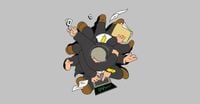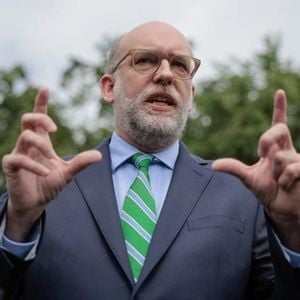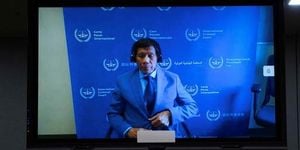It’s a tough time to be stepping into the corner office. Across the United States, a wave of new chief executives at household-name retailers and consumer brands are facing a gauntlet of challenges, many of them shaped by the Trump administration’s shifting trade policies and the ripple effects of global economic uncertainty. Meanwhile, in the energy sector, industry leaders are voicing mounting pessimism, frustrated by the same policy changes and their unpredictable impacts. The result? A business landscape where even the most seasoned executives are struggling to find their footing, and first-timers are being thrown into the deep end from day one.
According to the Q3 regional survey released by the Federal Reserve Bank of Dallas on September 27, 2025, pessimism is rising among U.S. oil and gas executives. Many of them are openly frustrated with the Trump administration’s trade policies and regulatory changes, which they say are making it increasingly difficult to plan for the future. The survey paints a picture of an industry beset by uncertainty, with executives voicing concerns about everything from fluctuating commodity prices to the long-term viability of their operations.
But it’s not just energy companies feeling the squeeze. As The New York Times reported on the same day, new leaders at major consumer brands—including Nike, Starbucks, Peloton, REI, Michael’s, and David’s Bridal—are also grappling with the fallout from tariffs and policy shifts. These executives, many of whom have only recently taken the helm, find themselves navigating a landscape where the rules seem to change overnight and the pressure to deliver results is higher than ever.
Brian Niccol, who just marked his one-year anniversary as CEO of Starbucks, is a case in point. He’s working to improve the experience for both customers and workers at the coffee giant, but he’s also contending with higher coffee prices—a direct result of double-digit tariffs on Brazilian coffee beans, a key ingredient for Starbucks worldwide. The company’s response has been swift and, for many employees, painful: Starbucks announced this week that it would close underperforming stores in North America and lay off about 900 corporate employees, on top of the 1,100 jobs it had already cut earlier in 2025.
Peloton’s new chief executive, Peter Stern, who started in January, echoed the sense of being thrown into the fire. “I joke that I’ve gotten the full C.E.O. experience in my first nine months — just a few years ahead of schedule,” Stern told The New York Times. With Peloton’s sales falling more than a third after a pandemic-era boom, Stern is under pressure to right the ship while also figuring out how to price products made in tariff-hit countries like Taiwan, China, and Thailand. It’s a delicate balancing act, and not one for the faint of heart.
Mary Beth Laughton, chief executive of REI, started her role in February—just days after President Trump signed an executive order imposing tariffs on China, Mexico, and Canada. She described the environment as one of relentless volatility. “What’s been so challenging is just the uncertainty, the volatility and things changing all the time,” Laughton said. The hardest part, she explained, is trying to anticipate what’s coming next when the ground keeps shifting beneath your feet.
And while these new CEOs are well compensated for their troubles—earning more than $1 million in base salary, plus bonuses and stock options worth millions more—the expectations are sky-high. Consultants say the typical chief executive has just 90 days to six months to learn the ropes, identify the company’s biggest problems, and lay out a vision for the future. Often, that means embarking on “listening tours” with employees and customers, introducing new products, or even closing stores and laying off workers to signal a break from past leadership.
Kelly Cook, who took over as chief executive at David’s Bridal in April, acknowledged the scale of the task before her. “I stepped into the role at a time when the geopolitical and economic forces were reshaping retail,” she said. But for Cook, that’s part of the appeal: “It’s exactly the kind of challenge I love.”
Still, the stakes are high, and the margin for error is slim. “You only get one first year,” said Daniel Heaf, who became chief executive of Bath & Body Works in May. The former Nike executive recalled advice he received during his interview process: “What you do in those first 12 months — whether you realize it or not — defines your trajectory as a leader.”
The pressure is especially acute in the consumer sector, which accounted for a quarter of all chief executive turnover across corporate America, according to a recent report by executive search firm Crist|Kolder Associates. The average tenure for a chief executive in consumer businesses was just 5.9 years—one of the shortest spans in American business. By comparison, tech CEOs average a decade, and those in financial services nearly nine years.
Christine Greybe, president of DHR Leadership Consulting, said boards are using this moment of upheaval to select executives who have never held the top job before. “Historically boards preferred prior corner-office experience, but there’s a lot of recycled leaders as a result,” Greybe told The New York Times. “So you’re seeing an openness to first-time C.E.O.s.” While these newcomers bring fresh ideas and a willingness to shake up operations, the risks are real. With economic conditions so unpredictable, even experienced leaders can struggle to keep their companies on course.
The trend isn’t limited to retail. Target, Yum! Brands, and Procter & Gamble all named new chief executives in 2025, with each expected to confront the same daunting mix of tariff-related challenges and shifting consumer sentiment. Michael Fiddelke, who will take over as chief executive of Target in February, put it bluntly: “A clear sense of focus will be critical to navigate the landscape and not get distracted.”
For some, the chaos of the moment is part of the appeal. Kathy Gersch, president and founder of consulting firm Kotter, noted that first-time CEOs might be more willing to take on risky roles than their more experienced counterparts. “Somebody that’s getting an opportunity to be a first-time C.E.O. might be more willing to step into a riskier role than somebody that is a very experienced C.E.O. that may have lots of options in front of them in terms of choices they can make,” she said.
Across the board, though, the message is clear: the honeymoon period is short, and the demands are relentless. “You don’t get grace,” Greybe emphasized. Boards, investors, and employees alike expect results—fast. And with tariffs, regulatory shifts, and economic headwinds all converging at once, the pressure on America’s newest CEOs has never been greater.
As 2025 draws to a close, both the energy and retail sectors stand as stark reminders of how global policy decisions can ripple through entire industries, upending careers and reshaping the way companies do business. For the leaders at the helm, it’s a trial by fire that will define not just their own futures, but the fortunes of the brands they lead.




